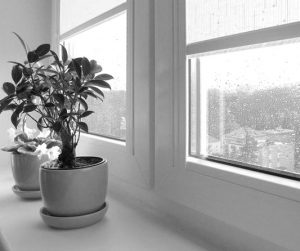
Windows are one of the things that get looked at when we do a Scottsdale or Prescott home inspection for a buyer or seller. This evaluation of windows determines not only if they open and close properly, but also looks for issues like broken seals or other defects that may need to be addressed or looked at more closely. If you decide to replace defective windows either before or after the sale of the home, here are a few items that may help you understand what is best for you.
First of all, if you are the seller or the buyer and a home inspection reveals defective windows, don’t panic! The cost to repair or replace the window may not be all that bad, and the potential savings in energy even better.
The Potential Energy Payback
The U.S. Department of Energy estimates that the average household spends between $1,500 and $2,500 annually on energy bills, and attributes about 45% of the expense to heating and cooling. With a window replacement project, selecting the right windows can have significant impact not only on the price of the project, but also on the potential for cutting energy expenses, which is especially important for those who intend to remain in their homes for years after the project is completed.
But when it comes to replacement windows, one size does not fit all. Homeowners need expert guidance to select products that offer the best value for their budget, climate, and the orientation of their home with respect to sun and shade. They should also be careful to contract only with installers who are well trained, efficient, and guarantee their work.
Are Replacement Windows the Right Choice?
It’s important to first determine what type of window project is best for your home. Technically speaking, replacement windows are designed to fit inside an existing window frame so that the siding and trim needn’t be disturbed or replaced.
New-construction units have nailing fins and are designed for installation in a rough opening.
Installation of prime windows requires removal of siding and trim around the window, then restoration of the finishes once the window is in place.
If an existing window frame is relatively square and free of rot and other defects, replacement windows can work well and save lots of time and money. But if an existing window has shifted out of square or there are signs of moisture infiltration in the surrounding wall, the old window and surrounding finishes should be removed. This gives the installer a chance to inspect the framing, find and flash the infiltration source, add insulation where necessary, and seal the opening against water and air leakage.
Replacement Window Material Choices
Vinyl
Vinyl replacement windows are a popular choice due to their affordable cost and low transmission of heat and cold air through the frames. They require little or no maintenance, which should always be factored into the value proposition.
There’s wide variation in the quality of vinyl frames and sashes in the market. More dimensionally stable vinyl frames are extruded with matrices of reinforcing cells for greater strength, and have joints that are welded. These features improve the potential for weather-tightness, energy performance, and lasting attractiveness.
One note: Residents of historic districts and certain homeowners’ associations should be advised that vinyl replacement windows may be prohibited and should check with authorities before installing them.
Wood
Wood replacement windows are more expensive than vinyl but offer comparable heat/cold transmission ratings. Wood is a good choice for older, traditional homes and in districts where vinyl and metal are prohibited by code. Though wood frames require routine maintenance, the extra expense can usually be avoided with approved metal or vinyl cladding applied at the time of installation.
Composition or Fiberglass
Fiberglass replacement windows are comparable in price to wood windows, and they boast better dimensional stability than vinyl. They have inherently good heat/cold transmission resistance that can be augmented with foam insulation applied within voids in the extrusions. Fiberglass windows are available in an array of factory-applied colors that require no maintenance.
Aluminum
Aluminum replacement windows are relatively inexpensive but have poor thermal transmission characteristics, especially when frames are constructed without a thermal break. However, they may offer decent value with the right glazing in warm climates. Factory-applied finishes need no maintenance.
Glazing Choices
Along with selecting a frame and sash with high resistance to thermal transfer, the right glazing can have an enormous impact on a replacement window’s energy-saving performance and, therefore, its long-term value. Glass by itself is not a particularly good insulator, but most replacement window suppliers offer a number of glazing options that can double or triple energy performance, in comparison to single glazing.
Selecting Replacement Windows Based on Orientation
ENERGY STAR, the U.S. Environmental Protection Agency’s program to help consumers and businesses conserve energy, makes some very specific recommendations for window U-value and SHGC ratings with respect to their orientation toward the sun:
In cold climates:
- South-facing walls: Shaded windows should have a higher SHCG for more passive heat gain in winter and lower U-values to reduce heat loss. Unshaded south-facing windows should have lower SHGC to prevent excessive heat gain in summer.
- East- and west-facing windows should have lower SHGC ratings.
- North-facing windows should have the lowest U-value possible; SHGC ratings are unimportant.
In warm climates:
- East-, west- and south-facing windows should have low SHGC and should be shaded to prevent excessive heat gain.
- All windows should have low U-values to minimize heat loss and reduce air-conditioning loads.
Go by the Numbers
For guidance in selecting the best values in replacement windows, analyze and compare the ratings found on the NFRC/ENERGY STAR labels on the products offered within your budget range.
Lots of info here, sorry if it is overwhelming, but all windows are clearly not the same, so ask your local expert to help you, and then enjoy those new windows and hopefully the energy you will save in the long run.
